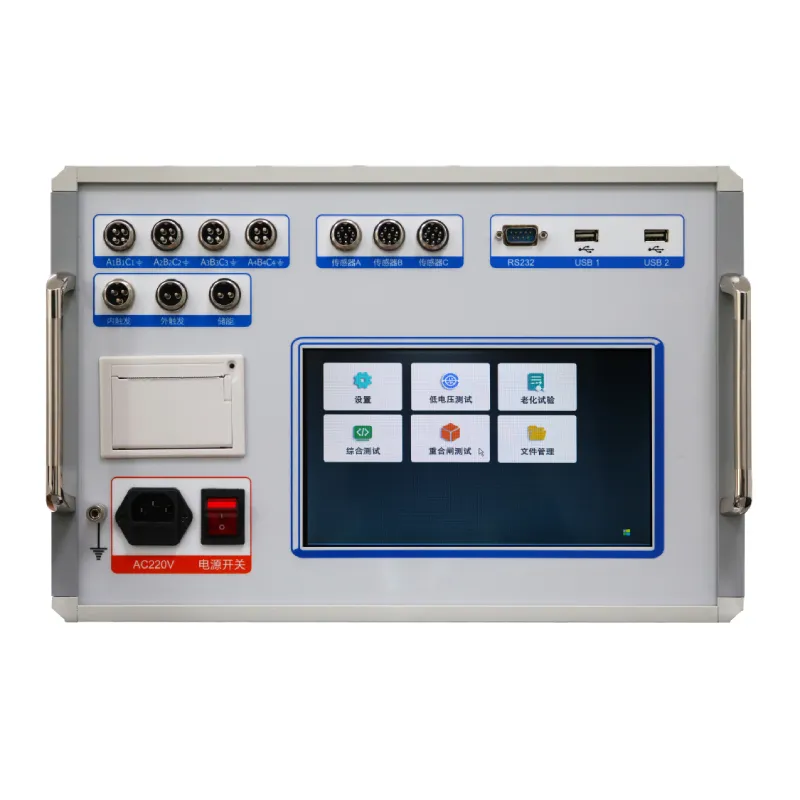 English
English


Comprehensive Guide to Electrical Transformer Testing Procedures and Maintenance Best Practices for Optimal Performance
Electrical Transformer Testing and Maintenance
Transformers are crucial components in electrical power systems, functioning as devices that transfer electrical energy between circuits through electromagnetic induction. Proper testing and maintenance of electrical transformers are essential to ensure their reliability, longevity, and efficiency. This article outlines the importance of transformer testing and maintenance, some common testing methods, and maintenance practices.
Importance of Testing and Maintenance
Transformers are subjected to various stresses such as thermal heating, mechanical vibrations, and environmental influences over time. These factors can lead to insulation degradation, winding failures, and other operational issues. Regular testing and maintenance help to identify potential problems before they escalate into major failures, which can result in costly repairs, equipment downtime, and even catastrophic accidents.
A well-maintained transformer not only ensures a continuous supply of power but also enhances the overall efficiency of the power system. Testing provides valuable insights into a transformer’s health and can help in predictive maintenance, thereby minimizing unexpected outages and extending the equipment's operational lifespan.
Common Testing Methods
1. Insulation Resistance Testing This test determines the condition of the transformer’s insulation system. By applying a high voltage to the insulation, it measures resistance, which helps in identifying moisture, contamination, or other insulation breakdown issues.
2. Transformer Turns Ratio (TTR) Testing This method assesses the transformation ratio between the primary and secondary windings. A deviation from the expected ratio can indicate winding faults or short circuits.
3. Power Factor Testing This test evaluates the dielectric health of the transformer insulation systems. A decrease in power factor can signal insulation deterioration, potentially leading to failure.
4. Sweep Frequency Response Analysis This advanced method examines mechanical and electrical integrity by measuring frequency response. It can pinpoint issues such as winding movement or core degradation.
electrical transformer testing and maintenance pdf

5. Dissolved Gas Analysis (DGA) This involves analyzing gases dissolved in the transformer oil. The presence of certain gases can indicate overheating or arcing within the transformer, enabling proactive measures before catastrophic failure occurs.
Routine Maintenance Practices
Regular maintenance practices should be established to keep transformers operating at peak efficiency. Key practices include
- Visual Inspections Conduct routine inspections for oil leaks, corrosion, and signs of physical damage. This can often reveal issues before they require more costly repairs.
- Cooling System Maintenance Ensure that the cooling systems, such as radiators and fans, are functioning correctly. Overheating is a leading cause of transformer failure.
- Oil Testing and Filtration Regular tests of transformer oil to check for contaminants and moisture levels are critical. Filtration and replacement of oil may be necessary based on the results.
- Thermal Imaging Use infrared thermography to detect hot spots on transformer components, which may indicate electrical imbalances or failures.
- Record Keeping Maintain detailed records of all testing and maintenance activities. This historical data aids in trend analysis and decision-making regarding repairs or replacements.
Conclusion
The reliability and efficiency of electrical transformers are vital to the overall performance of power systems. Through regular testing and informed maintenance practices, utilities and organizations can mitigate risks associated with transformer failures. Investing in a comprehensive transformer management strategy not only prolongs the lifespan of these critical assets but also ensures a stable and reliable power supply, ultimately benefiting both service providers and consumers alike. Emphasizing a proactive approach to transformer testing and maintenance is essential for any organization that relies heavily on electrical power systems.
-
Differences between open cup flash point tester and closed cup flash point testerNewsOct.31,2024
-
The Reliable Load Tap ChangerNewsOct.23,2024
-
The Essential Guide to Hipot TestersNewsOct.23,2024
-
The Digital Insulation TesterNewsOct.23,2024
-
The Best Earth Loop Impedance Tester for SaleNewsOct.23,2024
-
Tan Delta Tester--The Essential Tool for Electrical Insulation TestingNewsOct.23,2024





